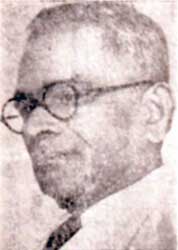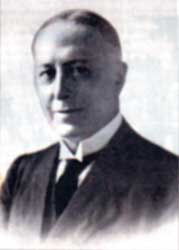A Sinhala newspaper is born
 |
| Julius de Lanerolle |
October 29, 1947 saw the birth of the Sinhala newspaper, 'Lankadeepa' from the Times of Ceylon group. Unlike today, there was only one other Sinhala newspaper – 'Dinamina' at the time. While 'Dinamina' was published by the Lake House group as a morning daily, 'Lankadeepa' was started as an evening newspaper. This was possibly because the English newspaper published by the group, 'Times of Ceylon' was released in the evening and it was logical from the point of view of distribution facilities that the Sinhala paper would also be an evening one.
It was a change of ownership of the Times group that paved the way for a Sinhala newspaper to be published. Having started the company to cater to the European interests, the European owners were not interested in a Sinhala newspaper. However, with the change of ownership in the mid 1940s, the picture changed.
A wealthy but simple businessman from Jaffna, Sangarapillai bought the newspaper group and when a proposal was made by the respected journalist of the day D. B. Dhanapala that they should start a newspaper in Sinhala, he agreed. The proposal received the support of K. C. Thangarajah, a newly appointed director.
A scholar of repute Julius de Lanerolle was invited to be Chief Editor, with Dhanapala taking a back seat managing the paper. The two of them along with the well-known monk-scholar from Vidyalankara Pirivena, Yakkaduve Hamuduruwo selected the name 'Lankadeepa.' The newspaper first came out as a tabloid, that is, half the size of the normal newspaper we are used to.
When Julius de Lanerolle moved out to take over as Editor-in-Chief of the Sinhala Dictionary (1950), Dhanapala became Chief Editor of ‘Lankadeepa.’
On May 1, 1949, the newspaper started publishing as a morning daily. The size was that of a normal newspaper.
The newspaper continued for 30 years until the closure of the company. It was re-started by the Wijeya Group of Newspapers and is today very popular among
readers. |


